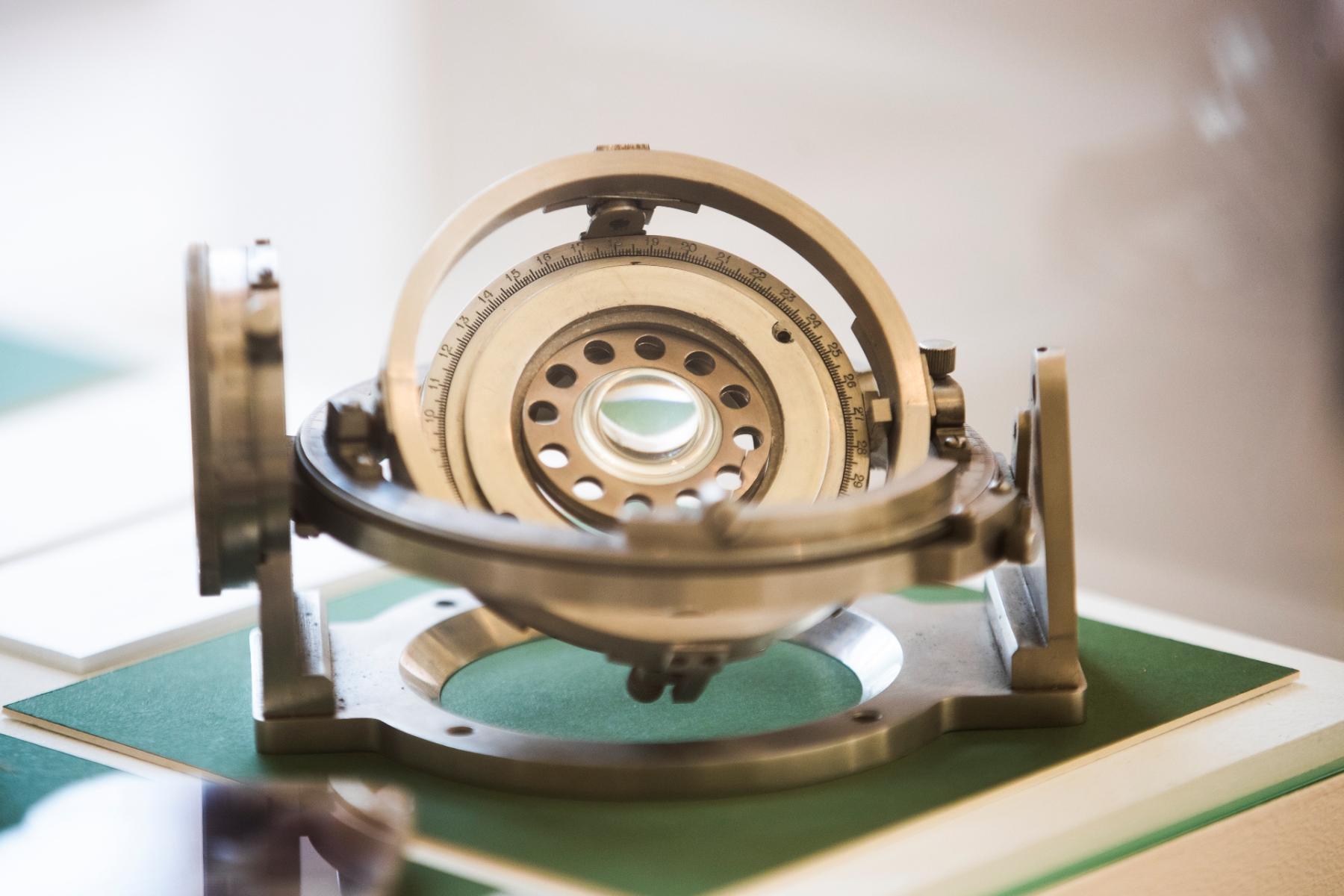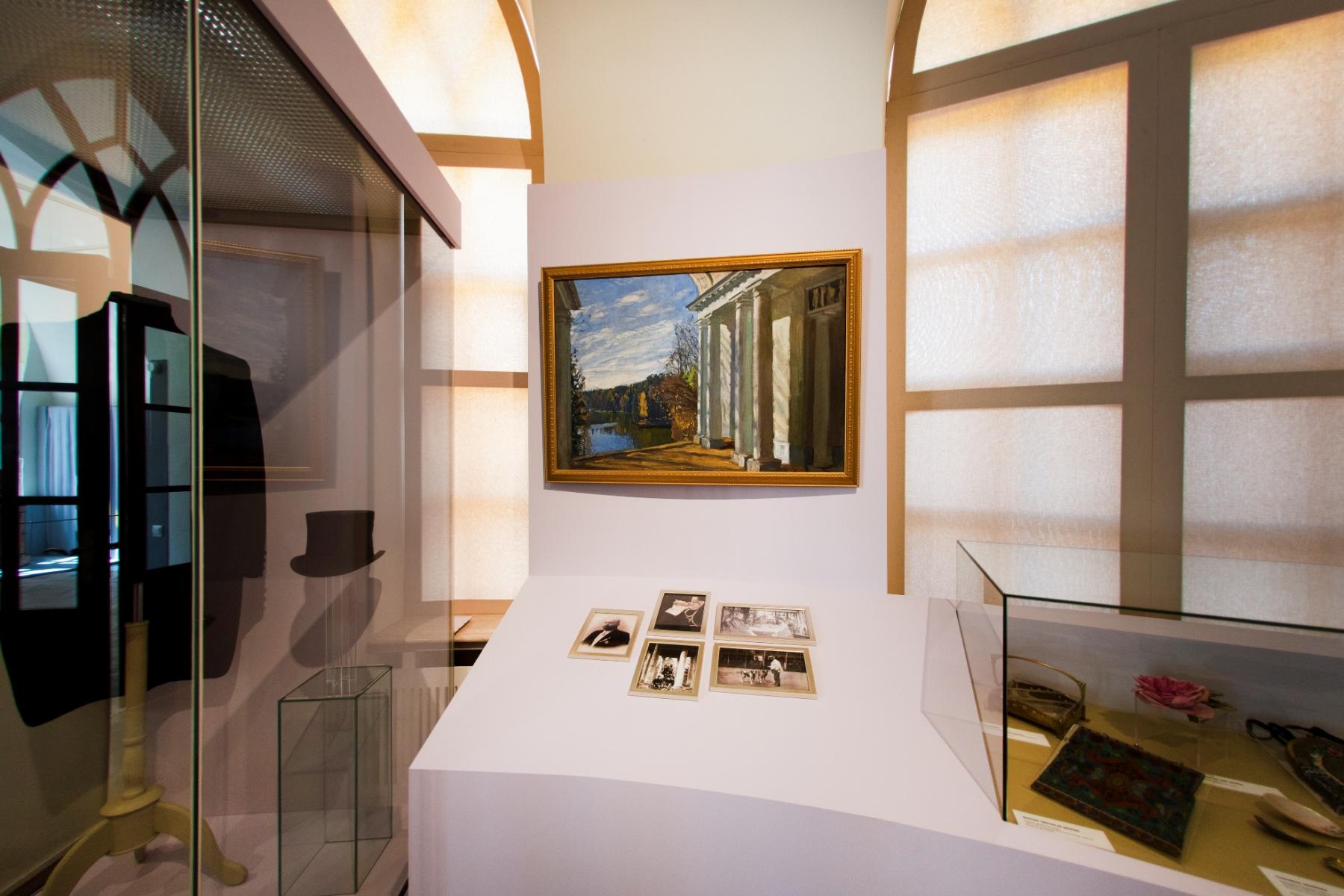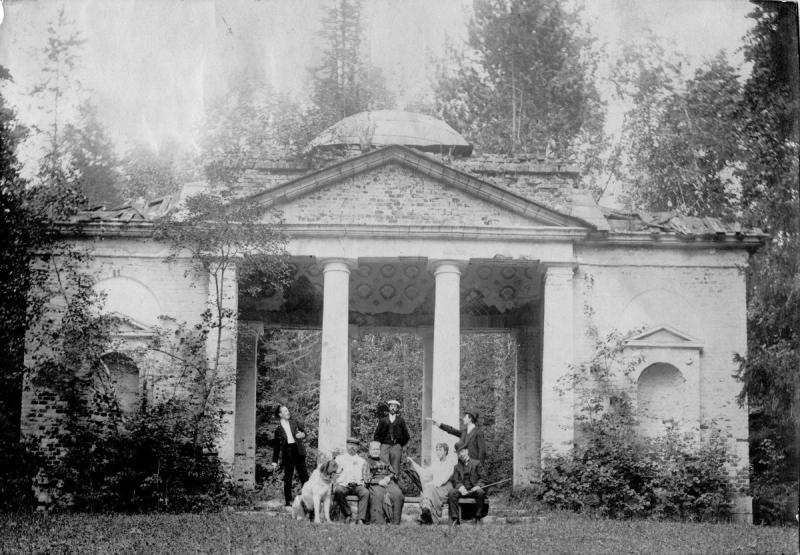“Tsaritsyno’s Dachas” exhibition opened after renewal
Jul. 07, 2020
The exposition “Tsaritsyno’s Dachas” was replenished with more than 60 new items – furniture, bronze, household items, toiletries, books, and other print media including postcards with views of Tsaritsyno at the beginning of the 20th century, which were recently acquired for the museum’s collection. A new thematic showcase “Tsaritsyno volost administration” appeared at the exhibition, individual topics were expanded.
The transformation comprised the hall dedicated to the family of Tsaritsyno summer residents of Viller. Their descendants donated things and photographs to the museum’s funds: a tailcoat, a lady’s hat, bead jewelry, a handbag, cutlery with mother-of-pearl and a number of other items that can now be seen on display.
An Art Nouveau dressing table by Master Orlov also appeared in the hall. There are elegant perfume bottles made of double-layer glass, a travel bag, a fan, tongs and other “ladies’ things”.
In the “office of the scientist” you can see the desk of mahogany, recently restored. In recent years, first-class objects of a high artistic level have been purchased in the museum’s funds, which have found their place in the halls: the bronze sculpture “Bathing Venus”, Albert Benoit’s watercolor “Tsaritsyno” and furniture.
One of the sections of the exhibition is dedicated to the famous Muromtsev family. Maria, the youngest daughter of Professor S.A. Muromtseva, was married to the then-famous Polish musician Adam Wieniawski. After her marriage in 1907 she lived with her husband for several years at the dacha in Tsaritsyno all year round. Here Wieniawski wrote several romances. Maria sometimes translated poetry for them from French. Wieniawski devoted many of his romances to Leonid Sobinov, with whom he was closely acquainted. Copies of notes with composer’s dedication inscriptions and notes made by the hand of the great tenor can now be seen in the exposition.
The section devoted to the history of the Tsaritsyno Zemstvo School was significantly expanded in the new exposition. The attention of modern students and their parents will be attracted by textbooks of the time, geographical atlas, school supplies. Unique is the handwritten abstract (or rather a textbook) in geometry, compiled for the owner of the textbook by his teacher.
The exposition “Tsaritsyno’s Dachas” dedicated to the history of the popular summer countryside and its inhabitants from the 1860s until the revolution opened in the Third Cavalry Building in 2017. It was the result of more than a decade of preparation: researchers looked for the descendants of the Tsaritsyno summer residents, negotiated the transfer to the museum of documentary evidence – negatives, photographic prints, diaries, household items. Since then the exhibition has been repeatedly supplemented.




